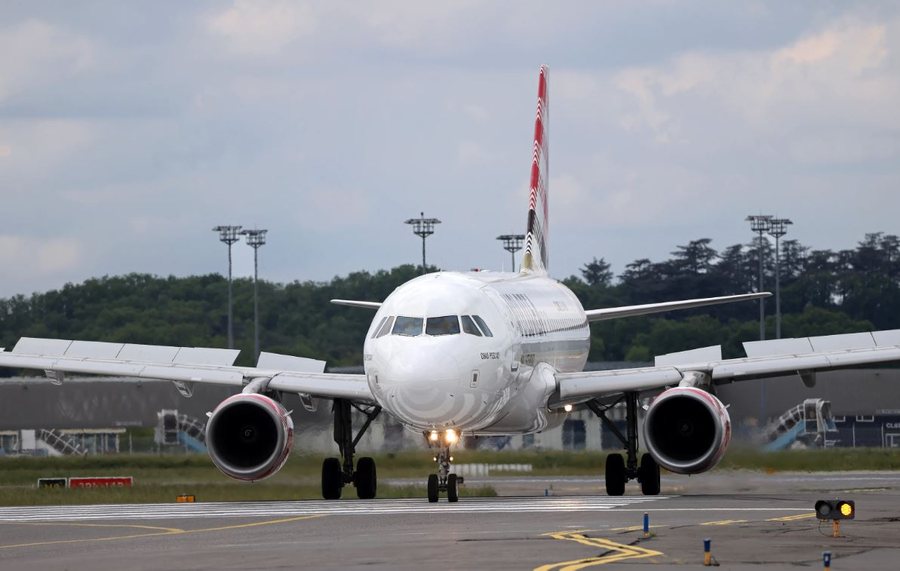
A tragic accident at Orio al Serio airport has brought attention to a little-known but real risk of a person being sucked into a jet engine. According to initial reports, a person was struck by one of the engines of an Airbus A319 aircraft during ground operations, in circumstances that are still being investigated by authorities. But is it really possible? The answer is yes, and the risk exists even when the engines are not at full power. Given today's event, Italian media have brought to attention how such a thing can happen when the engine is at minimum speed, or how such an engine works.
How does a jet engine like the one involved in the event work?
Turbofan engines like those in the affected aircraft are designed to generate between 85 and 120 kN of thrust through a multi-stage process. Air enters through a large front fan ("fan"), is compressed by a series of internal compressors, mixed with fuel, and then ignited in the combustion chamber. The hot gases that are generated exit at high speed from the rear, producing thrust.
Some of this air does not enter the combustion, but is accelerated by the fan and bypasses the central core. It is this "dual path" that makes turbofans more efficient and relatively quieter than older jet engines.
In this whole process, the initial phase, namely, the air intake, is essential. Even when the engine is idling, the force with which it "swallows" air from the front remains very high. And it is precisely this intake that represents an immediate physical danger to anyone who gets too close.
What does "slow" or "minimum regime" mean?
The risk also exists when the aircraft is in "idle mode" or slow mode, that is, when the engine is running but is not providing enough thrust to move the aircraft. This is the mode in which it remains "on hold", for example while the aircraft is stopped on the runway or is moving slowly.
Even if it appears to be "sleeping," an engine at idle continues to suck in hundreds of kilograms of air per second. This creates a dangerous, invisible, but very powerful suction field. And since an engine in those conditions is also difficult to hear for ground operators (who, while performing their activities, wear ear protection), starting in the 1990s, safety agencies introduced the rotating helix, for airline aircraft, which highlights the rotation of the fan.
How dangerous is a working jet engine?
To give an immediate idea of the risk, here are the figures provided by IATA (International Air Transport Association), which represents airlines from around the world and has defined risk zones around jet engines, and by the FAA (Federal Aviation Administration), the US federal agency that regulates civil aviation:
The danger zone is approximately 4.2 meters from the engine when idling and reaches up to 10 meters when the engines are at higher speeds.
Air speed is over 150 km/h at a distance of 1 meter
Suction pressure: up to a-10 kPa
In practice, a person within a radius of 3 meters from an engine at minimum speed can be unbalanced. Within one meter, he can be completely sucked in.
Today's accident is not the first.
The Orio al Serio case is still under investigation, but similar incidents have been documented before. In 2006, in Atlanta, an aircraft mechanic crashed into the engine of a Boeing 737 while the plane was idling. He died instantly.
A similar incident occurred in 2023, in Alabama, where an operator was swallowed by a burning Embraer E175 engine, also in that case at idle. Perhaps the most sensational case remains that of 1991 on a US aircraft carrier, where a sailor was sucked into the engine of an A-6 Intruder but survived. He was pulled out with severe burns but alive, an extraordinary circumstance. (A2 Televizion)











